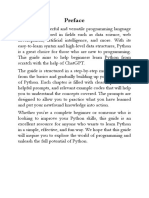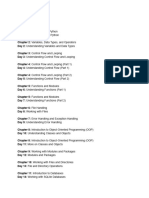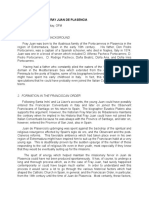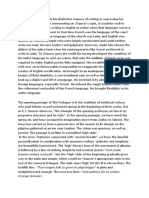0% found this document useful (0 votes)
5 views5 pagesFull Data Science Manual
What the document is about
It is a Data Science & Analysis Training Manual, specifically Module 1: Python for Data Science. The manual introduces Python programming from the basics and gradually builds toward applying Python in data analysis.
Where it originated
The document appears to be part of a structured training program or course material created for teaching Python in the context of data science. It looks like it was designed for students or trainees in a classroom/bootcamp setting.
Uploaded by
johnbila2016Copyright
© © All Rights Reserved
We take content rights seriously. If you suspect this is your content, claim it here.
Available Formats
Download as PDF, TXT or read online on Scribd
0% found this document useful (0 votes)
5 views5 pagesFull Data Science Manual
What the document is about
It is a Data Science & Analysis Training Manual, specifically Module 1: Python for Data Science. The manual introduces Python programming from the basics and gradually builds toward applying Python in data analysis.
Where it originated
The document appears to be part of a structured training program or course material created for teaching Python in the context of data science. It looks like it was designed for students or trainees in a classroom/bootcamp setting.
Uploaded by
johnbila2016Copyright
© © All Rights Reserved
We take content rights seriously. If you suspect this is your content, claim it here.
Available Formats
Download as PDF, TXT or read online on Scribd
/ 5






















































































